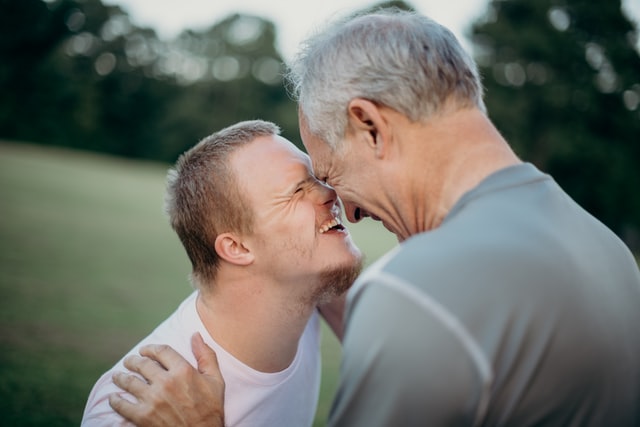The Last Children of Down Syndrome
By Sarah Zhang,
The Atlantic
| 11. 18. 2020
Prenatal testing is changing who gets born and who doesn’t. This is just the beginning.
Photo by Nathan Anderson on Unsplash
Every few weeks or so, Grete Fält-Hansen gets a call from a stranger asking a question for the first time: What is it like to raise a child with Down syndrome?
Sometimes the caller is a pregnant woman, deciding whether to have an abortion. Sometimes a husband and wife are on the line, the two of them in agonizing disagreement. Once, Fält-Hansen remembers, it was a couple who had waited for their prenatal screening to come back normal before announcing the pregnancy to friends and family. “We wanted to wait,” they’d told their loved ones, “because if it had Down syndrome, we would have had an abortion.” They called Fält-Hansen after their daughter was born—with slanted eyes, a flattened nose, and, most unmistakable, the extra copy of chromosome 21 that defines Down syndrome. They were afraid their friends and family would now think they didn’t love their daughter—so heavy are the moral judgments that accompany wanting or not wanting to bring a child with a disability into the world.
All of these people get in...
Related Articles
By Jonathan Matthews, GMWatch | 12.11.2025
In our first article in this series, we investigated the dark PR tactics that have accompanied Colossal Bioscience’s de-extinction disinformation campaign, in which transgenic cloned grey wolves have been showcased to the world as resurrected dire wolves – a...
By Jenny Lange, BioNews | 12.01.2025
A UK toddler with a rare genetic condition was the first person to receive a new gene therapy that appears to halt disease progression.
Oliver, now three years old, has Hunter syndrome, an inherited genetic disorder that leads to physical...
By Simar Bajaj, The New York Times | 11.27.2025
A common cold was enough to kill Cora Oakley.
Born in Morristown, N.J., with virtually no immune system, Cora was diagnosed with severe combined immunodeficiency, a rare genetic condition that leaves the body without key white blood cells.
It’s better...
By Rachel Hall, The Guardian | 11.30.2025
Couples are needlessly going through IVF because male infertility is under-researched, with the NHS too often failing to diagnose treatable causes, leading experts have said.
Poor understanding among GPs and a lack of specialists and NHS testing means male infertility...




